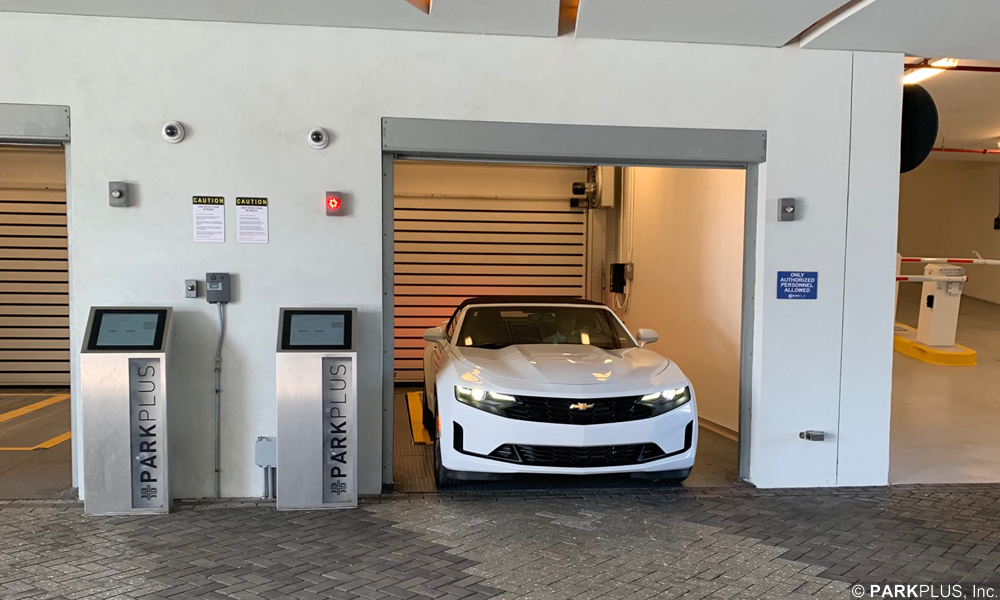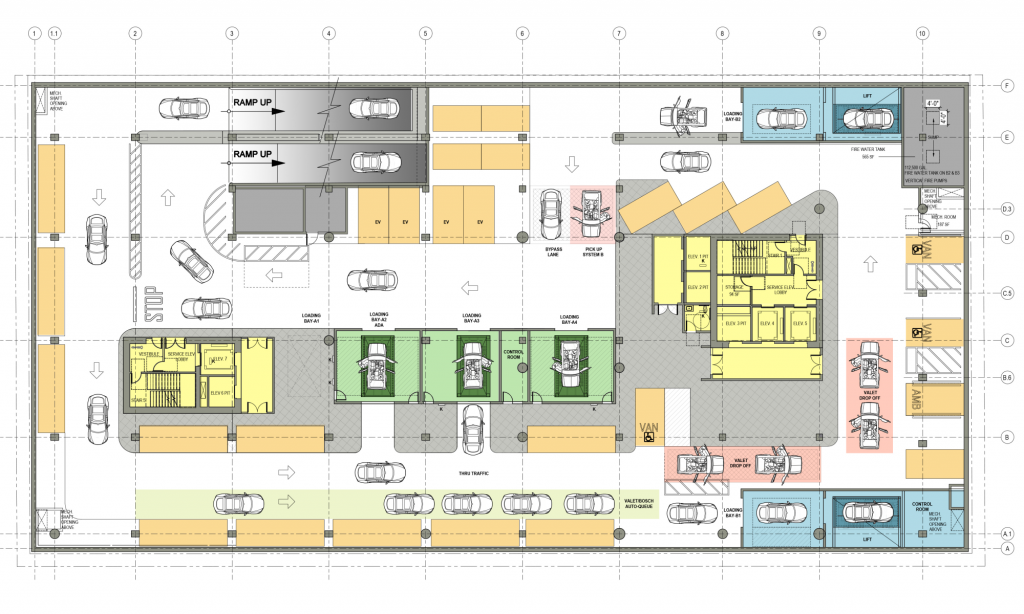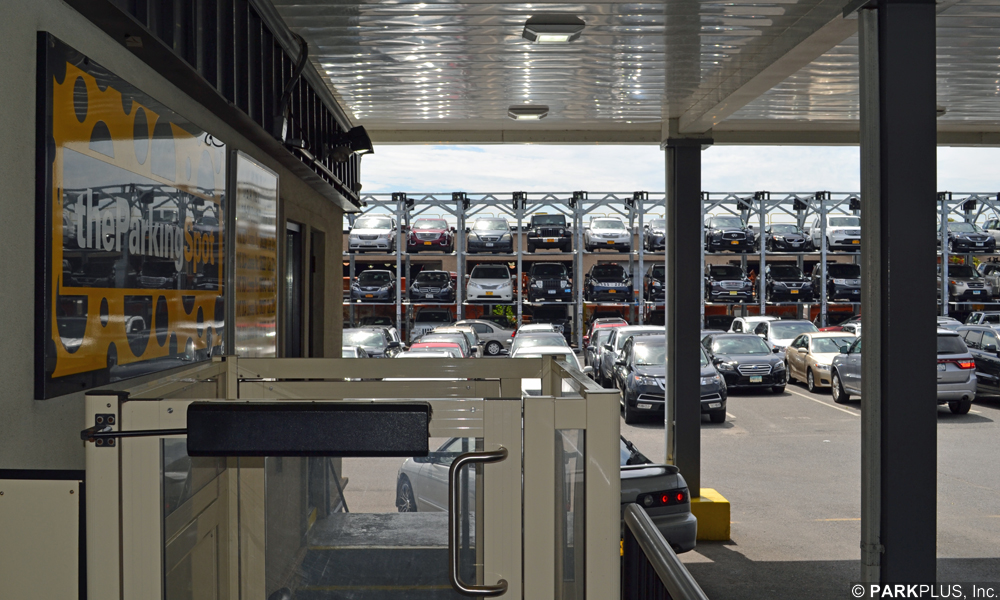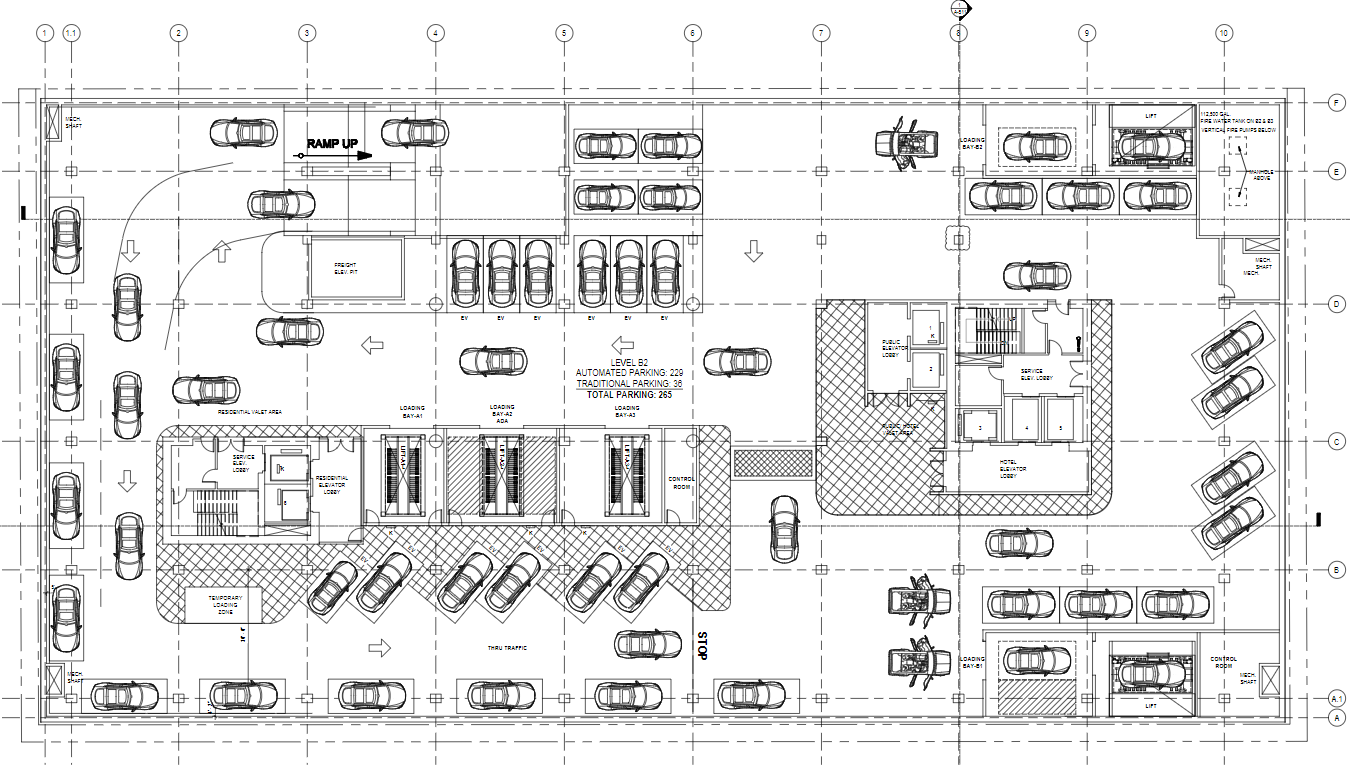When designing a High Density Parking System, there are several considerations around Site Planning that must be considered. These are:
Entrance and access requirements: Entrance and access requirements for Automated and Mechanical parking system areas should be designed similarly to traditional parking systems. Entrance locations relative to intersections and other site conditions should be taken into account.

Attended systems should also anticipate adequate reservoir spaces for the repositioning of vehicles on-site. Many municipalities require these systems to provide an operational plan showing how the attendants will stage vehicles within the parking area
Parking management: Mechanical systems are typically managed by a parking operator with attendants or valet service, while semi-automated and automated systems generally only require the oversight of a building manager or concierge.
Queuing: On-site queuing of vehicles entering the parking area must be considered. Adequate queuing space should be provided during peak demand as determined in the traffic study. Entry and exit loading areas should allow for queuing and maintain ease of access in and out of the system’s parking area.

Reservoir spaces: These are dedicated spaces within the high-density parking system or parking area for the repositioning of tandem parked vehicles. The number of reservoir spaces is determined in accordance with local code. The minimum number of spaces required is typically equal to the number of spaces in tandem parking configurations to unstack and access the rear vehicle. Oftentimes, reservoir spaces are located in the drive aisle.
Turning radius: Automated and mechanical parking systems should be designed with sufficient turning radius to maintain ease of access and reduce vehicle damage. Some systems can be designed with turntables.
Loading/unloading and waiting area: Parking system areas should be designed with a designated space for drivers to load and unload their vehicles. This space should be adequately designed for drivers to wait while their vehicles are being retrieved. This is often overlooked, but when planned for, can become an amenity to the project.

###
This content is part of The American Institute of Architects (AIA) and U.S. Green Building Council (USGBC)-accredited course, Introduction to High-Density Parking Systems. Take the course online or register for/request one of our webinars to learn more and earn continuing education points.



 844-472-7575
844-472-7575
